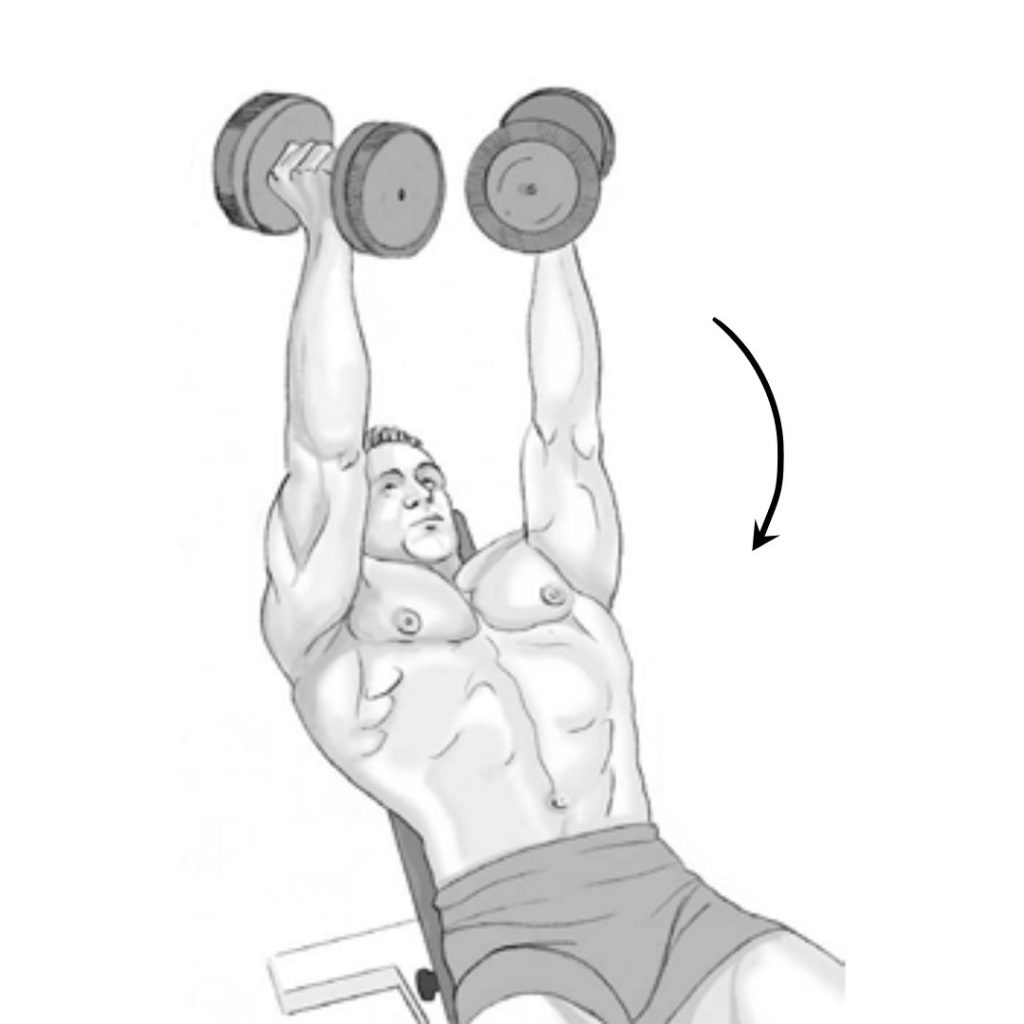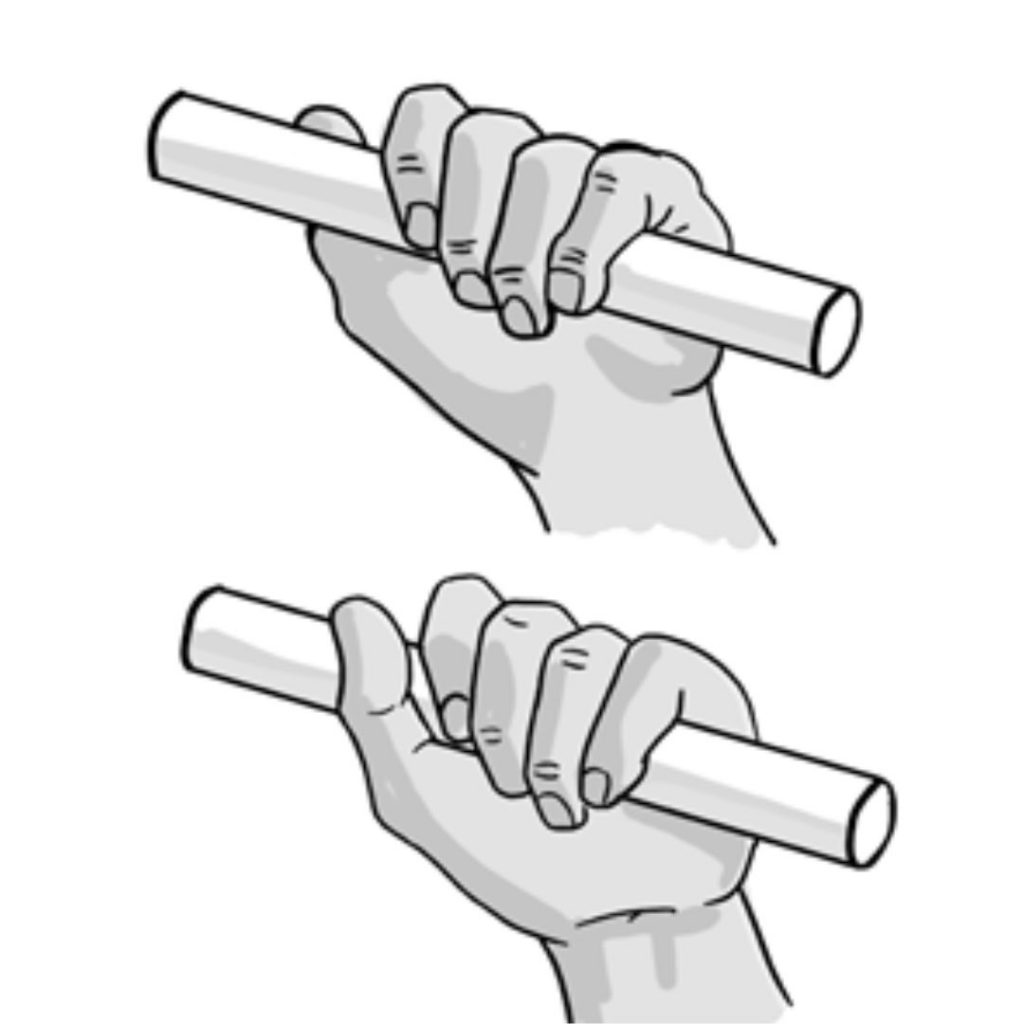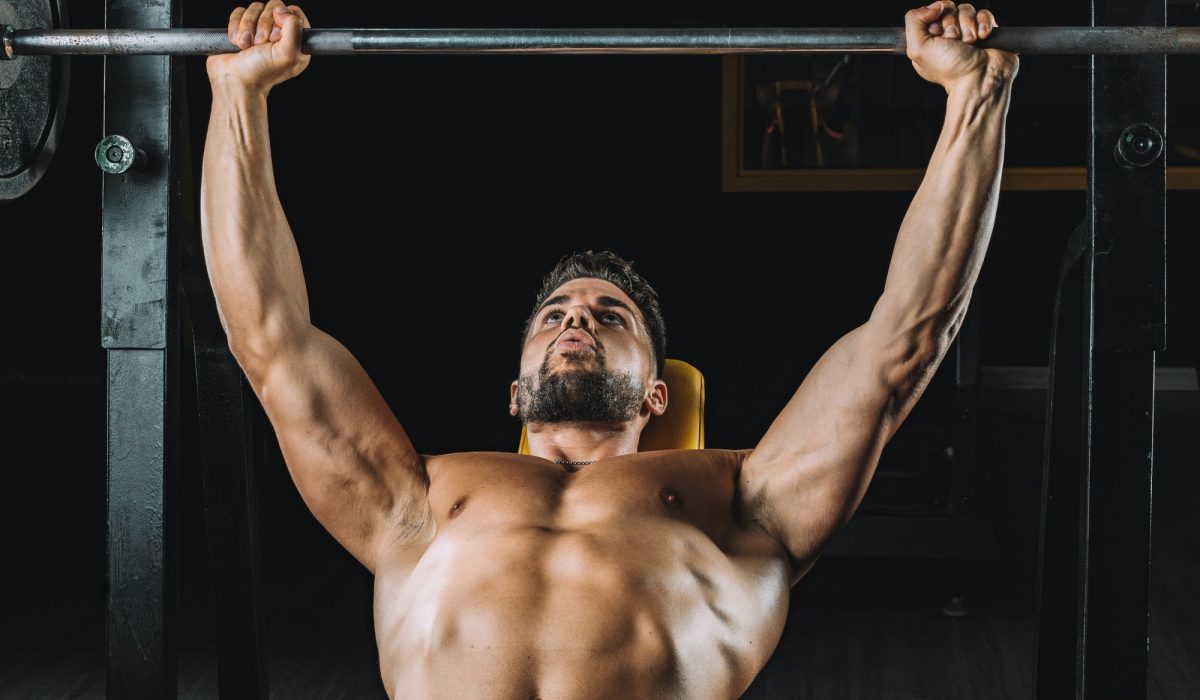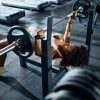Incline Bench Press
MUSCLES INVOLVED
MAIN MUSCLES: pectoralis major (clavicular area), triceps, deltoids (anterior)
SECONDARY MUSCLES: deltoids (medial), coracobrachialis, serratus anterior, subscapularis
ANTAGONISTS: latissimus dorsi, biceps, deltoids (posterior)

VARIATION: WITH DUMBELLS
MUSCLES USED
pectoralis major (clavicular area), triceps, deltoids (anterior)
TECHNIQUE
Set up the bench in the same position as described for the basic exercise and lie back with the dumbbells on your knees or on the floor. The lift is the same as using a bar, but you can “close” toward the end of the movement, bringing the weights closer together. In theory, this provides a proximal workout (i.e. close to the sternum). However, the difference is not great because the whole muscle in any case contracts, given that there are no insertions between the medial and external area. That said, the movement is more natural.
Doing the incline bench press with dumbbells allows you to lower the weight further, which helps flexibility,although you should be careful to reduce the load to prevent injury. The main disadvantage is that the weight used is normally less than using a bar because of the movements needed to get into position starting from a low position (rather than lifting the weight down from supports). Also, there is a greater risk of instability toward the end of each set due to muscle exhaustion (often affecting the triceps).

EXECUTION
Sit back on the bench, set at an incline of no more than 30 or 45º, placing your feet firmly on the ground and supporting your back and head. Take hold of the bar, which should be directly above the forehead, with an overhand grip (pronation). The forearms should move perpendicular to the ground, and your hands should be a little more than shoulder-width apart.
Breathe in before lifting the bar off its support. Lower the bar until just touching the upper part of your chest and then raise it vertically. Keep your elbows away from your body. Exhale on completing the lift.
NOTE
The bench can be set at an inclination of up to 60 or 70º, which increases the work done by the upper part of the pectoralis major, but does so at the cost of shifting much of the effort to the shoulders.
This region of the chest should not be ignored, but it usually receives less attention than the lower part. Contrary to popular belief, however, it does not help women prevent or correct sagging breasts, though the exercise is no less useful for that.
Remember that you can train some muscles (e.g., the pectoralis, dorsal, and gluteus) by working one or another area because of the structure of the muscle fibers, but that bodybuilders tend to overstate the benefits of workouts targeting different parts of a single muscle sheath. This is often impossible, at least to the extent claimed. The medial and external region of the pectoral muscle is activated by horizontal adduction of the arm against resistance, like bench press exercises.
Common mistakes: setting the bench at too much of an incline (over 50º); arching the back; bouncing the bar off the chest; locking the elbows at the apex of the movement.
Wrist movements under strain can result in damage to the small bones and muscles in the joint, and sometimes injury to the forearm. A grip with the thumb in opposition to the fingers (“clasping” the bar) is more natural and, above all, safer for any kind of press.

VARIATION: WITH DUMBBELLS AND OUTWARD TWIST
MUSCLES USED
pectoralis major (clavicular area), triceps, deltoids (anterior and exterior)
TECHNIQUE
Basically the same as for the incline press with dumbbells. In this case, however, twist the thumbs
outward as you raise the weights, producing an external rotation of the arm. The movement must be
made by the whole arm and not just the forearm (supination). The twist is intended to increase the final contraction of the sternal part of the muscle, though it will not be very effective because it is usually only the forearm that rotates when the weight is already up.
The movement is therefore not caused by the pectoral muscle, the action of which involves medial and not external rotation. This exercise is not recommended for very heavy sets or beginners. In general, twist variants of this kind are non-essential




